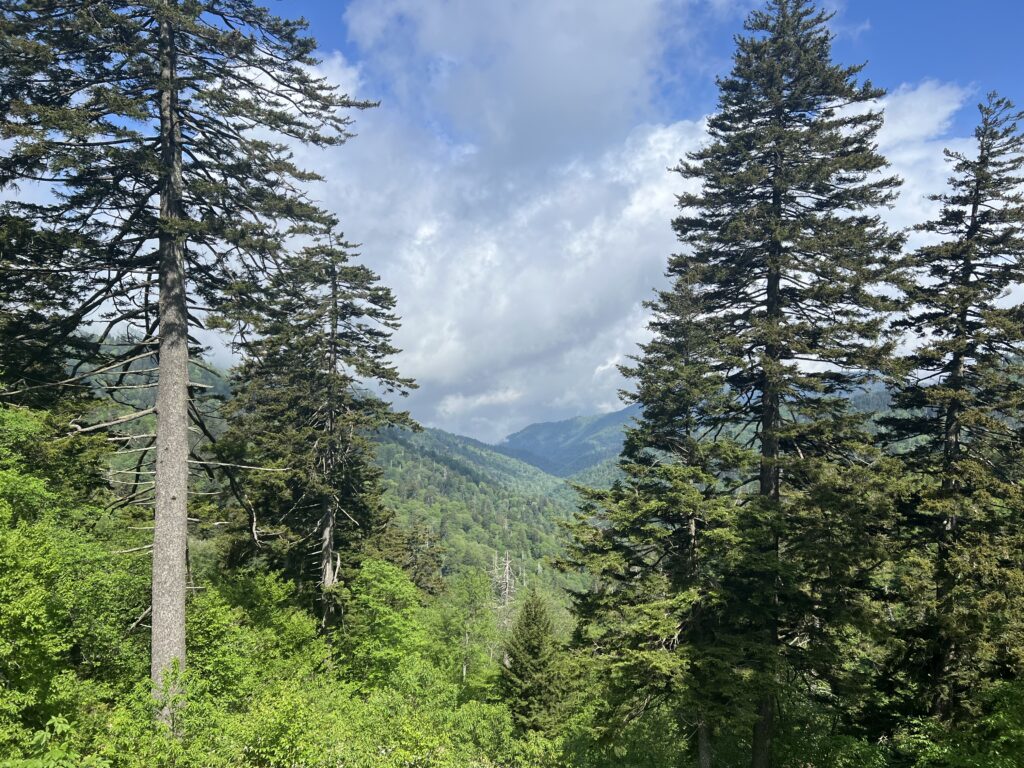
I feel so relaxed…
Yesterday I woke up to the crack of dawn and drove to the Great Smoky Mountains from Atlanta. During the trip I am going to tell you about, I hiked, learned a lot of history and was blown away by the magic of it all.
Imagine misty mountains that look sort of blue, rich green pastures with elks and bears, old wooden cabins preserved from the eighteenth and nineteenth hundreds, fireplaces at dusk and epic waterfalls, always with this blueish peaks in the distance.
It was what we call a sight for sore eyes, in other words it is visually very impressive.
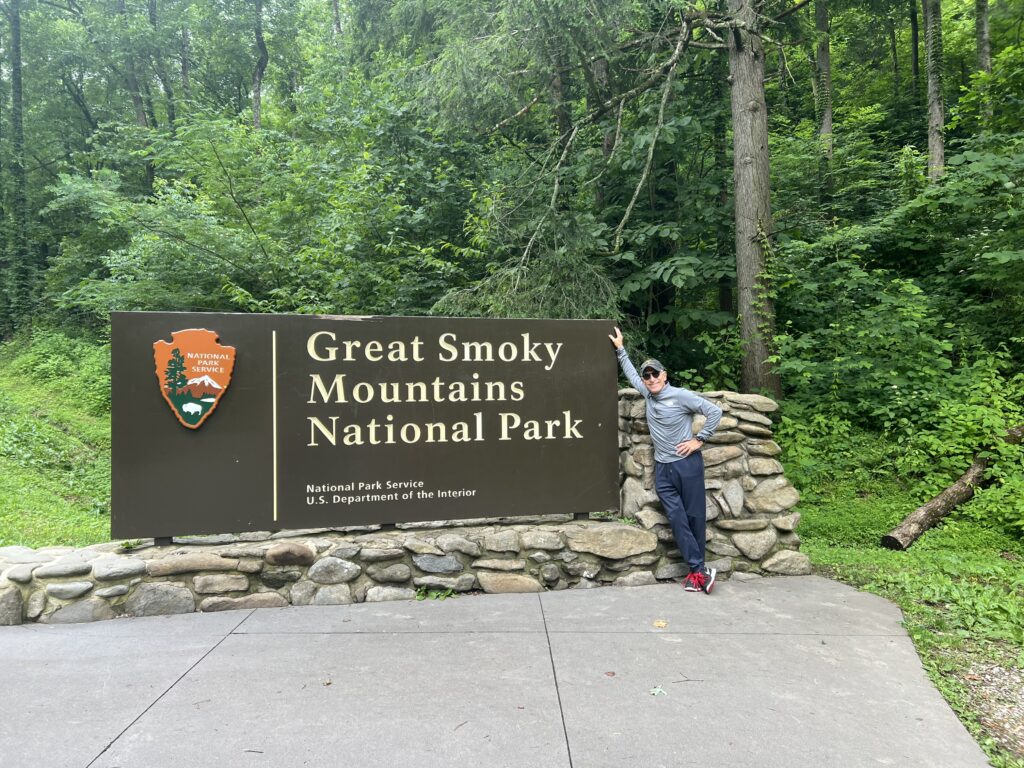
But there’s so much more to the Great Smoky Mountains than meets the eye: they are the heart of the Appalachian Culture.
And what is Appalachian Culture after all? We’ll talk a little bit of everything, from geography to traditions, folklore and probably the most interesting history lesson you’ll hear in a long time.
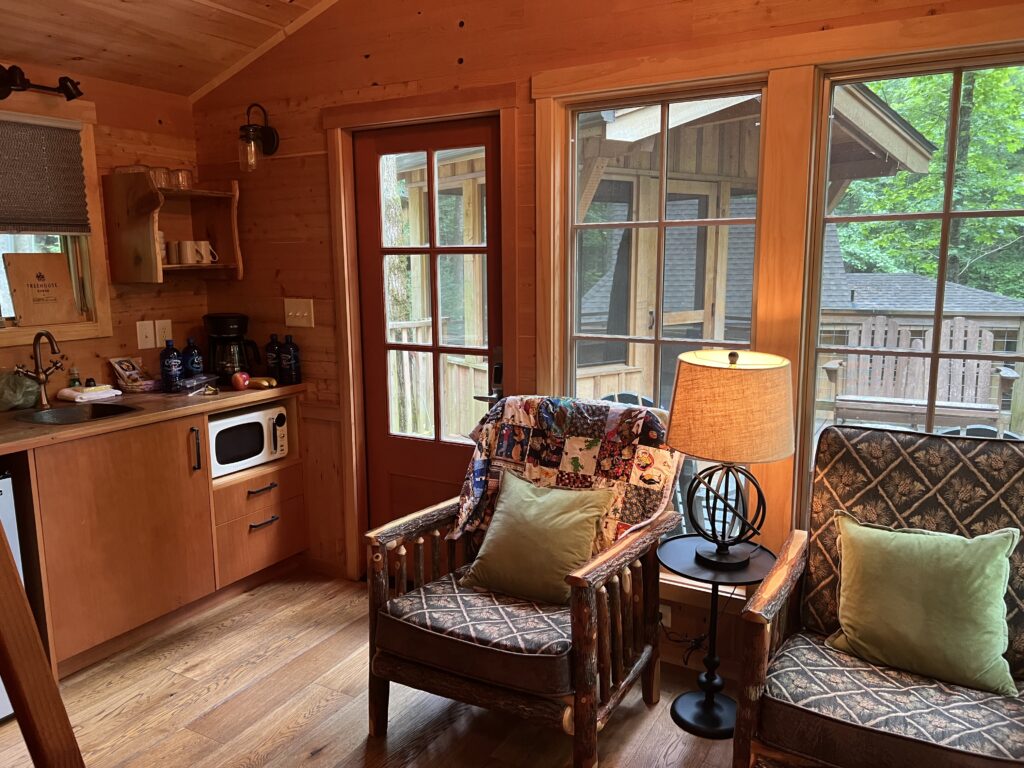
Did someone say illegal behavior and race cars? Stay reading up to end and I will not only tell you about it but also give you some tips on planning your next trip. Having just gone, there’s a lot I wish I had known beforehand so I’m happy to share all that with you.
First and foremost I think it is importante to get oriented. Where is the Great Smoky Mountains National Park? (let’s call it “the Smokies” for short)
The Smokies are part of the larger Appalachian chain which runs from Canada all the way down to Alabama, but this particular section -the Smokies- is located right at the border of North Carolina and Tennessee, so there are actually entrances from both states.
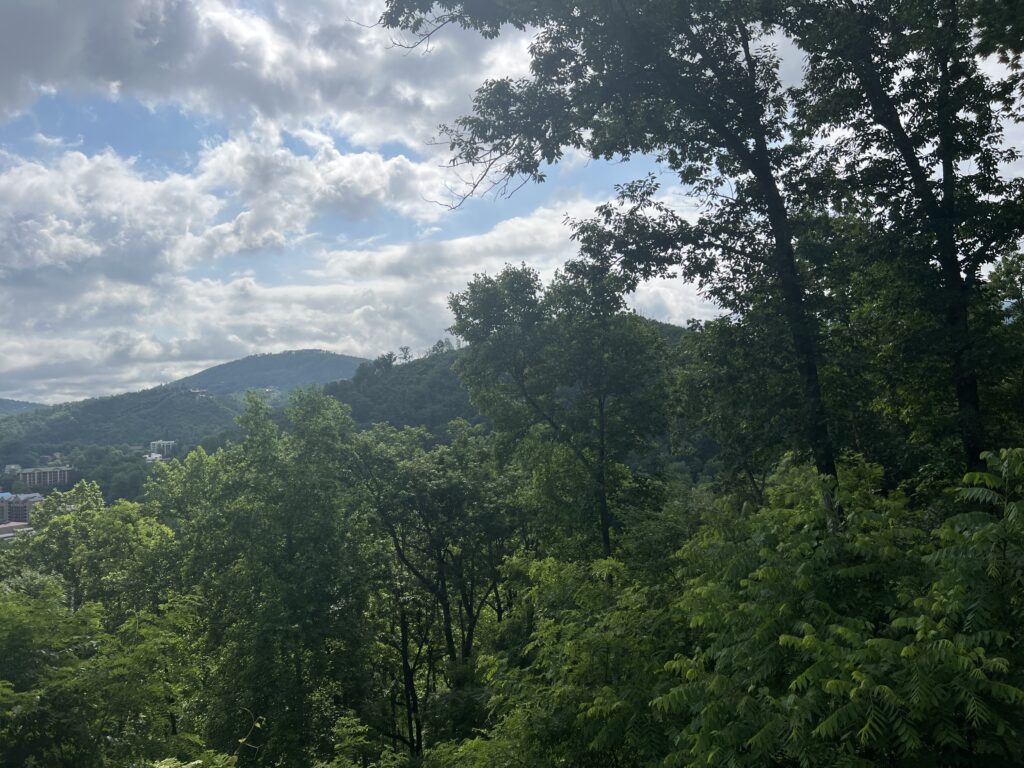
If you look at a map the park is located in the central eastern part of the United States. It is huge. It covers over 500.000 acres, being most of it forest. There are trees that are over 400 years old, and as a visitor there is an endless list of activities for you to do.
You can go hiking on beautiful trails filled with wild flowers and then end up in a waterfall: many waterfalls exist in the park and for me there is no better option than taking your hiking shoes off and deep your feet into the pools below the waterfalls. It’s a great way to cool off.
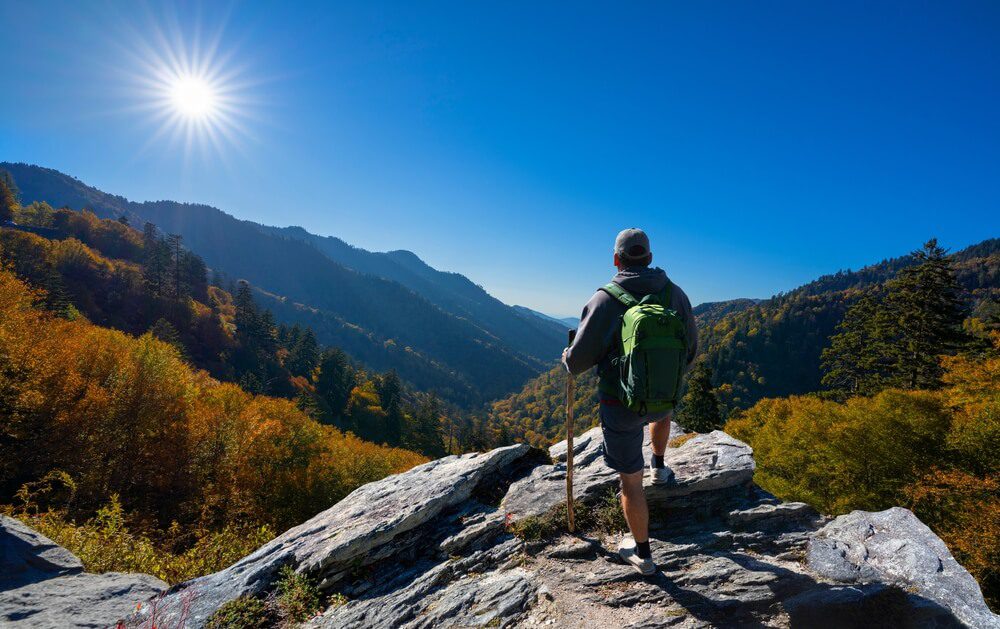
You can camp also at one of the many camp sites like Cades Cove, you can go back country fishing (if you have a fishing license) or even horseback riding in the valleys, although in the Smokies they alike to call them “coves”.
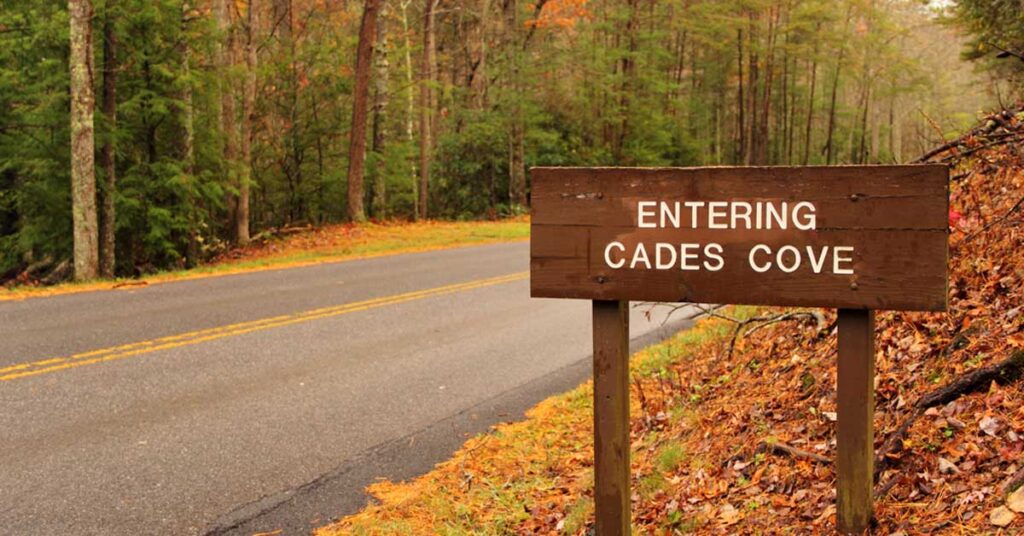
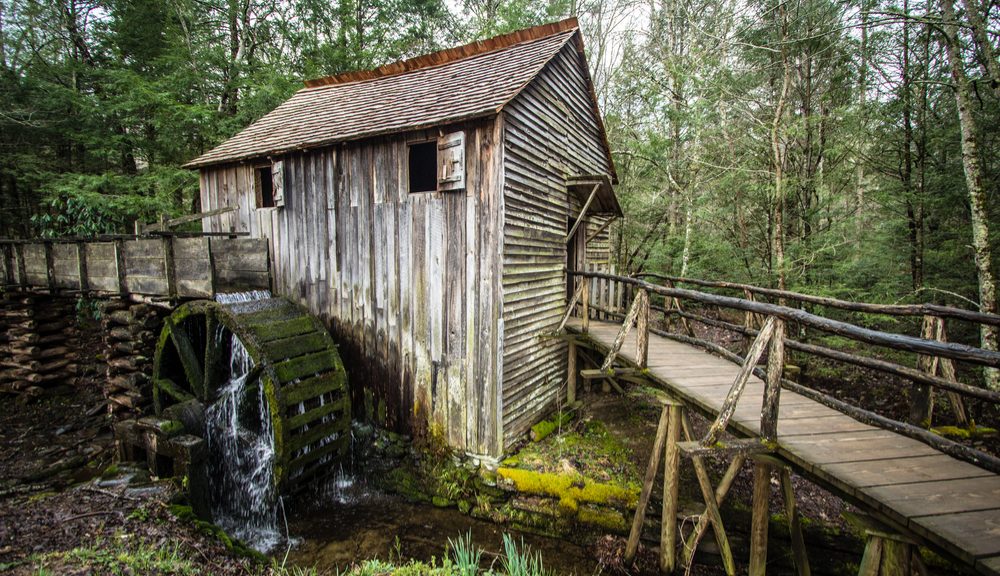
Typically when I use the word “coves” I normally think of a small bay in a beach where you’re somehow protected against being hit by the waves.
A “cove” is also a peaceful area between mountains typically as wide and flat. There’s a big grassy meadow probably, so “coves” are perfectly to watch wildlife. In Cades Coves, apart from white deers and bears, there are also groundhogs and turkeys: you may run into some raccoons and skunks even (you don’t want to be sprayed by a skunk because that would ruin the trip for everyone around you). But, yeah, there’s a lot of wildlife.
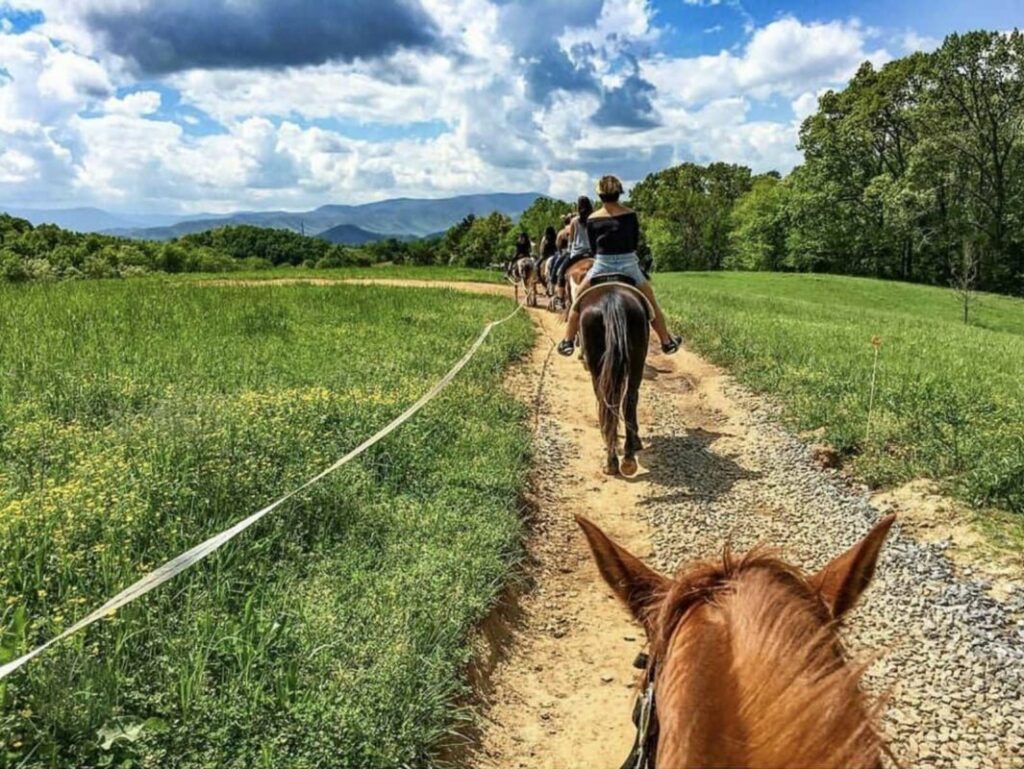
In fact in the rivers within the park you’ll find an abundance of trouts and salamanders. In fact the park is considered the salamander capital of the world. It is the home of more than 30 species of salamandras (and if you are not familiar with what a salamander is think axolotls -may be not quite as cool- they look like lizards, they are kind of cute, they are amphibious… Anyway, they are in the water and near the rivers.
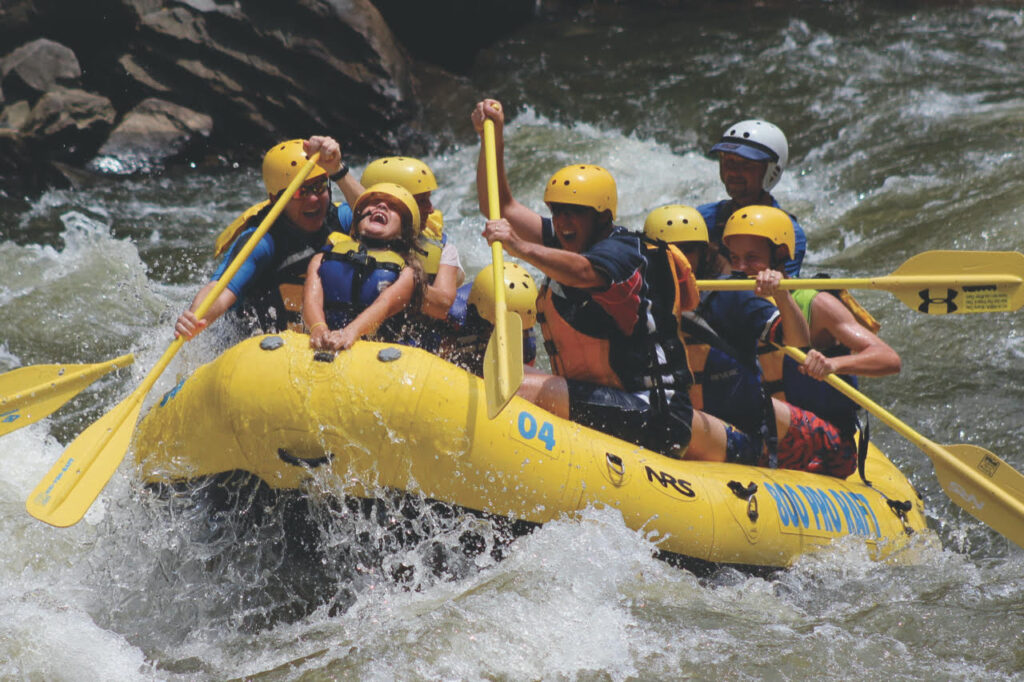
So you might be wondering why are the Smokies called “The Smokies”. Is it because they have a lot of forest fires? Actually, no: it is because of the way they look. If you’ve seen pictures of the Smoky Mountains you have probable seen the blue-gray mist that floats over the mountains. It makes the mountains look blue at a distance, a very similar effect you may find at the Blue Mountains near Sydney, Australia.
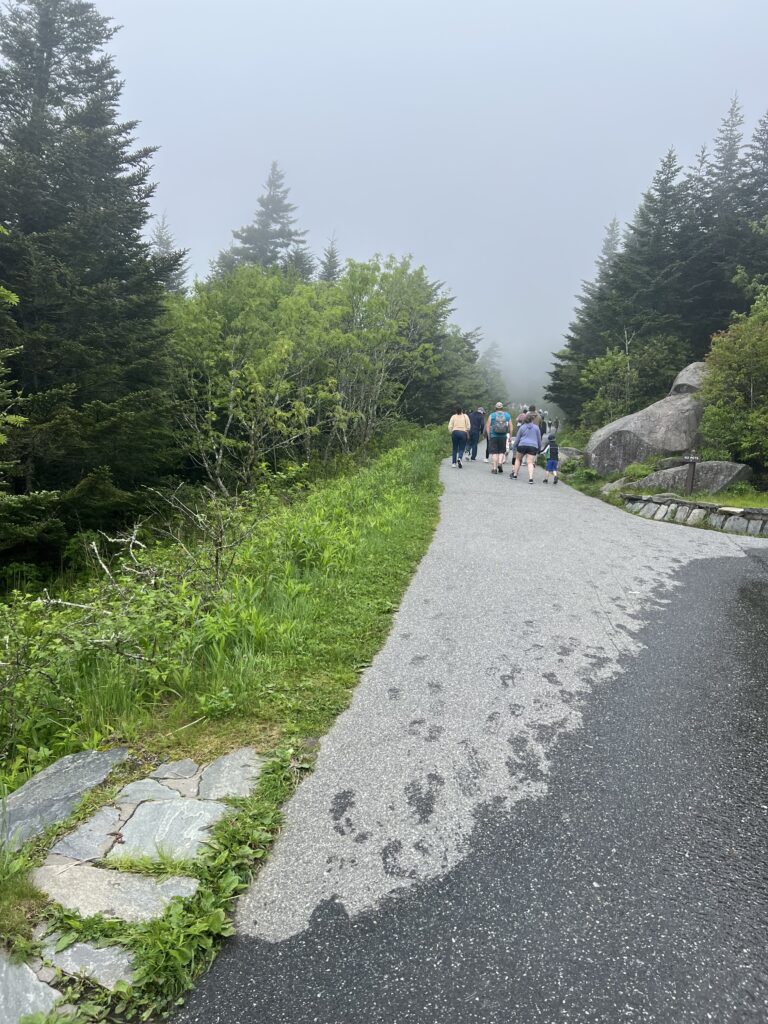
The floating mist isn’t actually smoke. It is caused by vapor released by conifer trees. The vapor moves in different directions creating that dreamy, smoky, effect.
In springtime the mountains bloom with wild flowers (like trilliums, lady’s slippers, crested dwarf iris, columbines or bleeding hearts) and in the fall the leaves turn brilliant shades of red, orange and gold.
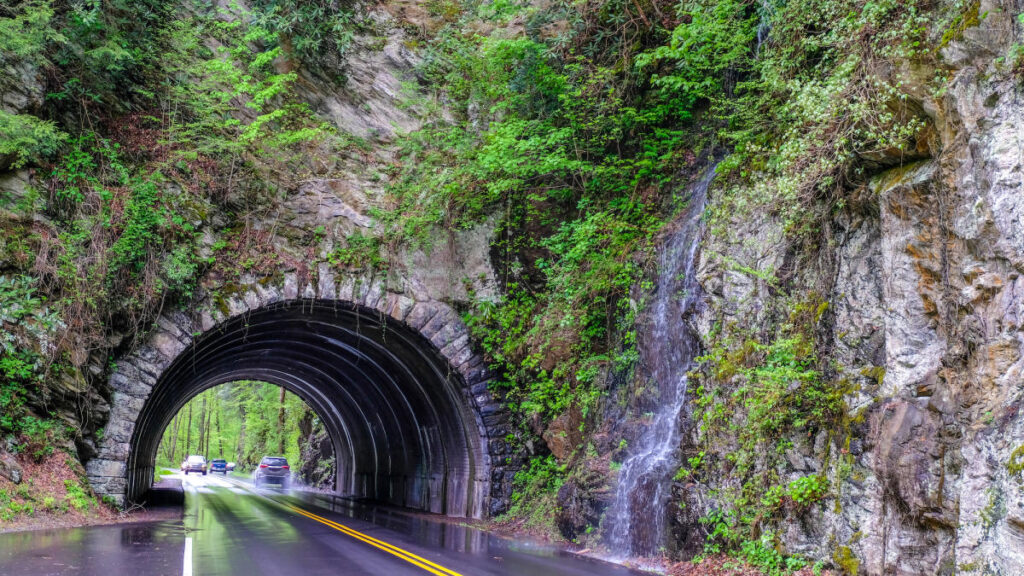
As you may know this is the most popular National Park in the US. In recent years more than 13 million people have visited annually, and the high season is typically between June and October.
So having gone in late May, I can say it is not as crowded as in summer months, but everything was very green and in bloom.
So what is the story behind it? And why is the park so popular?
Let’s take a step back in time…
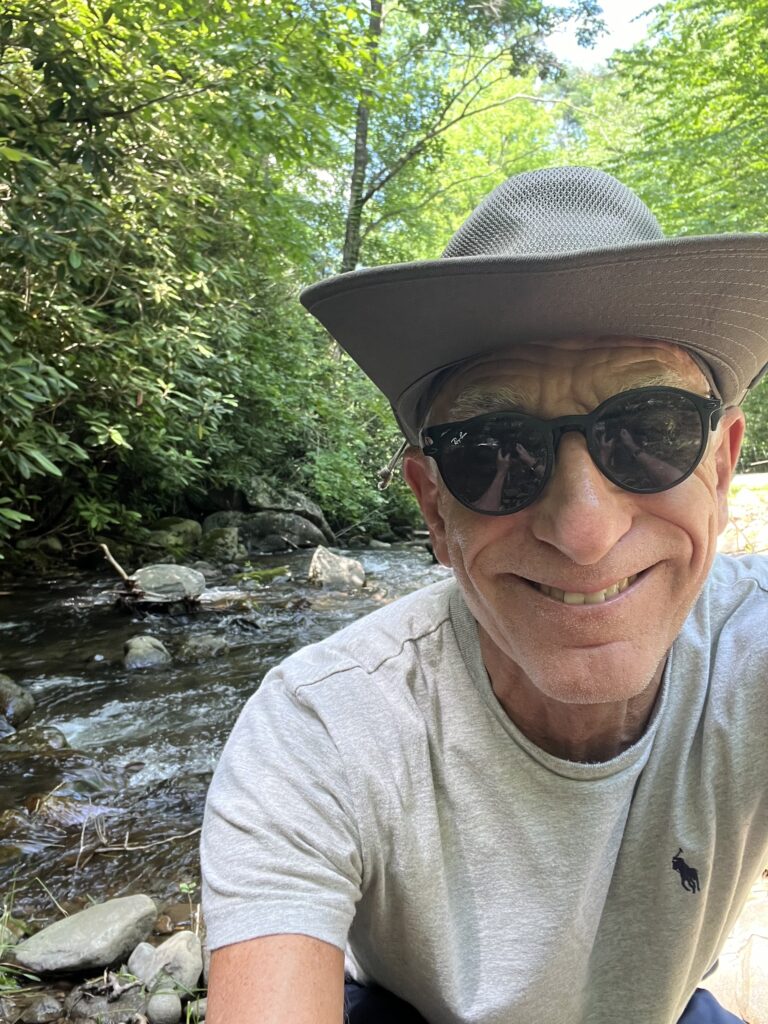
The Appalachians started to take shape 200 to 300 millions years ago, when tectonics plates crashed into each other. The land mass moved upwards creating the mountains we know today.
If you are a hiker you probably know of the AT, The Appalachian Trail, which is an epic 2198 mile hike that takes you through 14 states from Georgia to Maine. The Smokies are at the heart of that trail and long before the Smoky Mountains became a national park they were home to the Cherokee, one of the most prominent Native American tribe in the US.
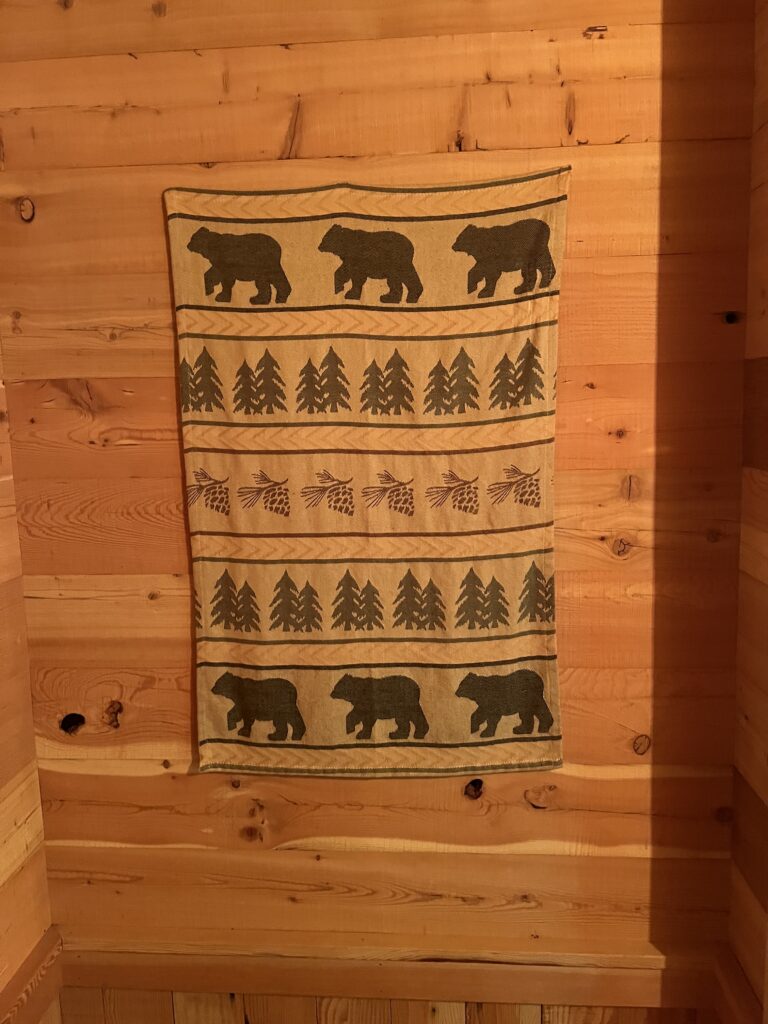
In 1819 the Cherokees signed a treaty and had to give their land in the Smokies up. Only 60 families received the right to stay, and to these days the Cherokees reside in Qualla Boundary, right outside of the park entrance in North Carolina.
So who kept the area? European-American settlers, most of them Scottish-Irish immigrants. And they created the foundation of what we now know as Appalachian Culture.
They set up small villages with simple log cabins. In the villages there might be one house or a coup for chickens to lay eggs, one house to store corn, an apple house for apple storage and for creating cider, a meat house to keep the meet and specifically a lot of pork. These foods were staples of the early Appalachian diet: once again, chicken and eggs, corn, apple jam, apple sauce, apple cider, pork… These settlers grew just enough food to survive.
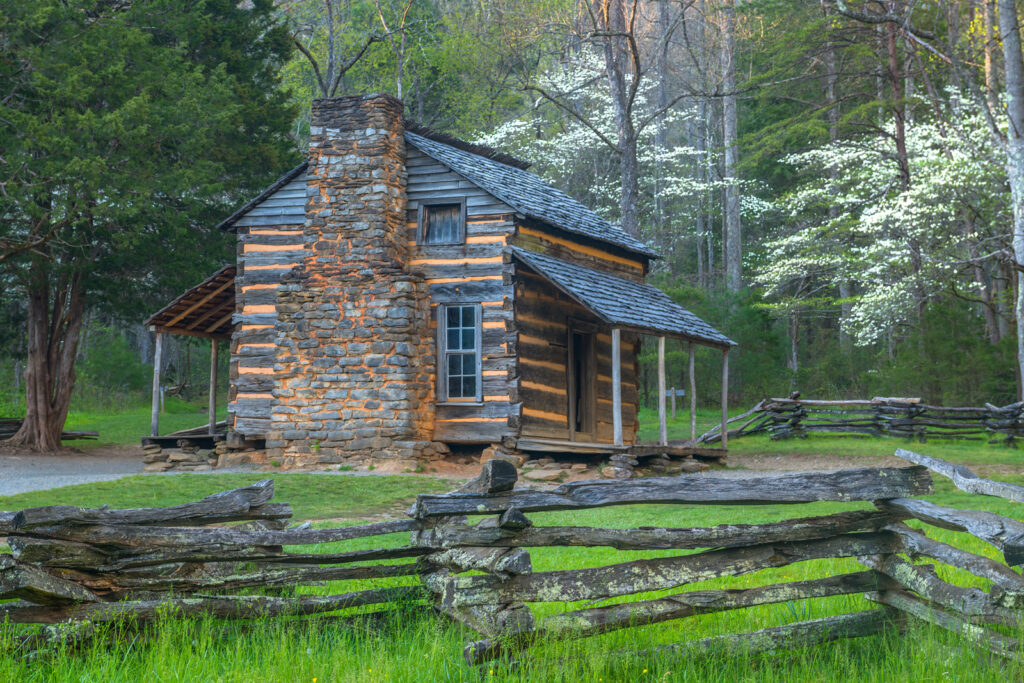
Families who lived in the simple log cabins developed a culture that was independent, religious and very much close-knit.
In the Smokies this probably was because they actually worked very closely together, gathered regularly, and you can see one of the preserved villages in Cades Cove. They had up to 132 families.
So life in the mountains was isolated in the beginning, in the 1820’. There were few roads and no electricity, nights were to play music, reading and telling stories by the fire. Over the time that also included a bit of moonshine and bluegrass.
Moonshine, folklore and bluegrass are definitely a core part of Appalachian culture.
So, let’s start with the stories…
Cherokee’s legends pioneered ghost stories in the Appalachian foothills and have been pass down through the generations.
Just for fun I’d like that you close your eyes for a second. Imagine you are sitting by a fire in the Great Smoky Mountains. Maybe you’re in Cades Cove, that grassy area I mentioned before, where bears and deers like to roam… Up above the stars are shining brightly… And, yes, just stick with me…
One famous Cherokee legend is about Spearfinger…
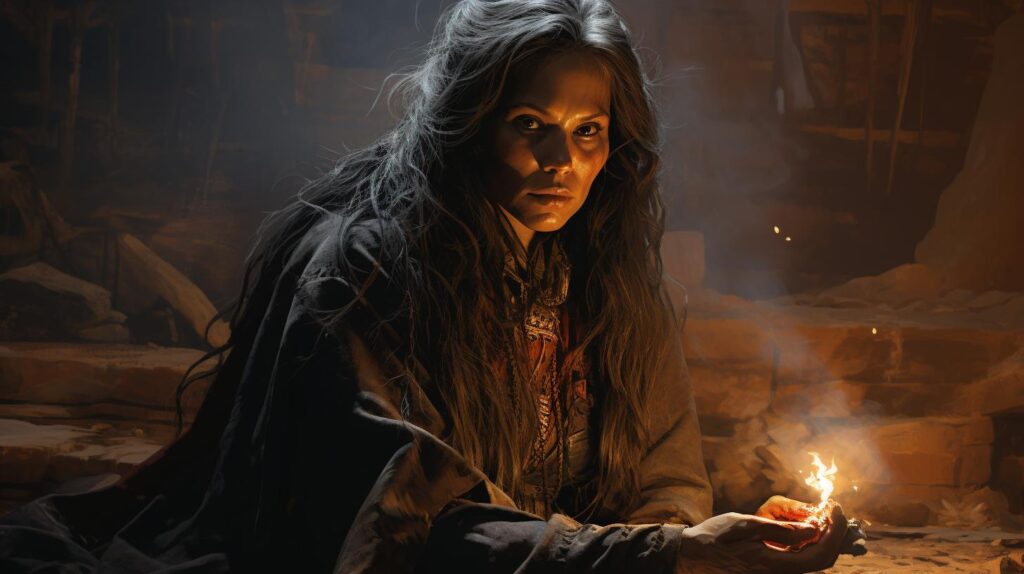
Spearfinger was a terrifying witch with a finger made of stone which was very sharp. It could slice through trees, rocks and… even unlucky humans.
And she was said to roam the forest disguised as an old woman humming and whispering to lure children away from safety. It is also said that she roamed the mountains praying on unsuspecting hikers. So if you enjoy hiking and you are in the Smokies keep your eye out for Spearfinger…
Another eerie creature of the Smokies is the Wimpiest Cat. The Wimpiest Cat is often described as a half woman half panther creature who was cursed to roam the woods for ever after spying on a secret ceremony she wasn’t supposed to see.
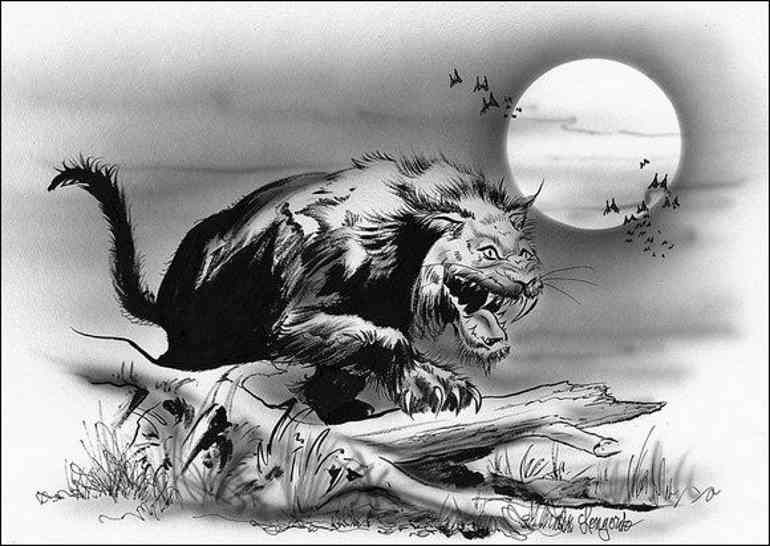
Some versions say she brings bad luck. Others say she is just misunderstood. According to the stories if you hear a woman scream at night in the Smokies it could be the Wimpiest Cat on the prawn… You might be in trouble.
As you can see these are great stories to retelling to scare your unaware friends while camping in the Smokies…
Last but not least is the legend of the lost sprits of Cades Cove. According to folklore some early settlers of the Cove still roam the valleys after dark, specially near the old churches and cemeteries.
Travelers have actually reported hearing ghostly singing and seeing flickering lights in the distance and then they commented that nobody was there.
So, interestingly, the Smokies are said to be full of “haints” which is a southern word for restless spirits who haven’t crossed over to the after life.

It’s fascinating to me how unaware I was about all this, but there are so manny southern front porches that are painted this color… Anyway, folklore is not just entertainment here: it’s parte of the soul of the Smokies and nothing brings more soul than music…
Bluegrass music was born in these mountains. By definition “bluegrass” is a style of American root music which has instruments like the banjo, fiddles and guitars.
Usually bluegrass music is fast and energetic.
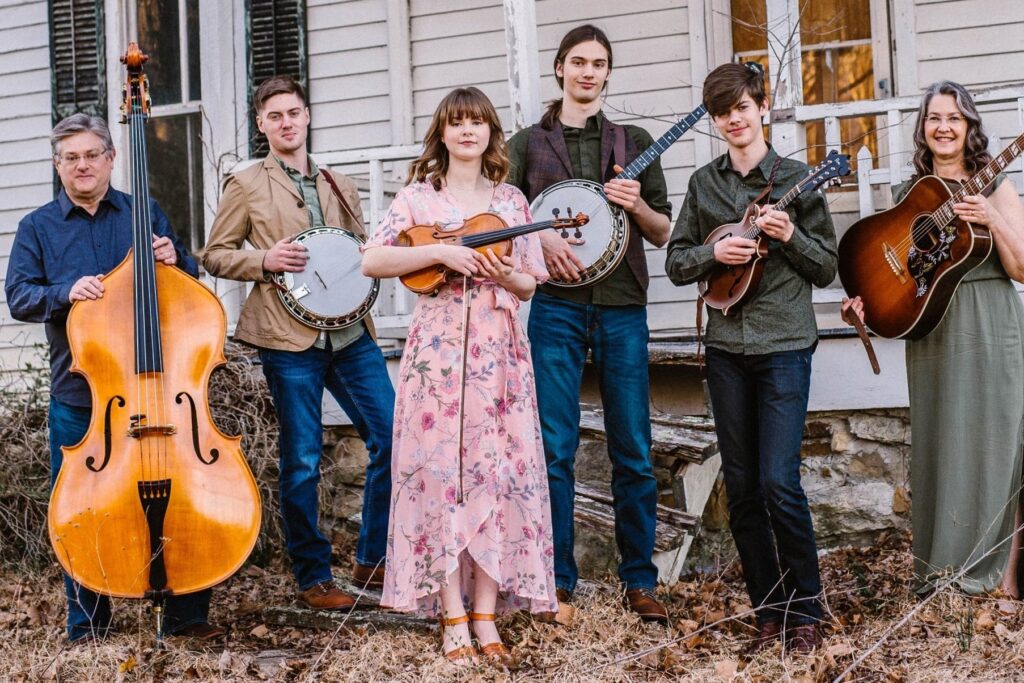
Bill Monroe was known as the father of bluegrass. And he helped to popularize the style in the 1940’. Today you can still listen to it in all Eastern Tennessee and Western North Carolina and usually bluegrass events are outside, they are really casual, you can bring a picnic, listen to a banjo player, shred on stage, and it’s a very often weekend experience that make you feel like if you really stepped out in another era.
Last but not least this is the story that I’ve been eager to tell and to which I alluded in the beginning when I mentioned “illegal” and “race cars”.
What could this be about?
If you wonder deep into de Smoky Mountains apart from the tourist attractions you might here whispers about the “good old days”, the days when homemade whiskey was not just a drink but a way of life. What do I mean?
In the remote Smoky Mountains some of the families often struggled to make their ends meet, that is to say they have to struggle to make enough money to live.

Corn was abundant, but selling a few gallons of corn whiskey could earn far more than selling a whole car load of corn on its own.
During “Prohibition” -when alcohol was forbidden across the US from 1920 to 1933- the demand for illegal liquor skyrocketed, because people wanted liquor and it was not legally available.
So with all the thick forests and the hills, The Smokies were the perfect place to hide a still -which is essential to elaborate whiskey- and to set up business. If you had a strong corn crop and if you were not afraid to break the law you could turn that grain into liquid gold. In fact that whiskey began to be known as “moonshine”, meaning that the whiskey was made at the light of the shining moon when the smoke of privation was harder to spot. It was illegal, it was a dangerous thing to do so that’s why they use to do it at nighttime. The men who created the moonshine were known as moonshiners.
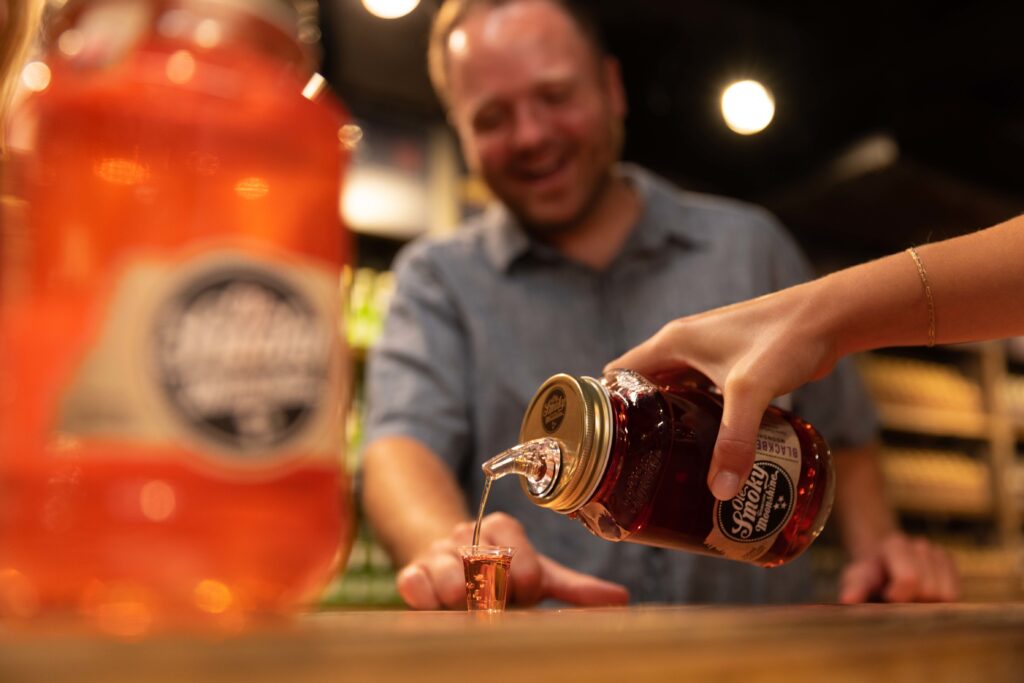
On the other hand revenuers -that is to say, government agents related to tax evasion- were tasked with the objective of shutting down the illegal distilleries. They often raided hidden operations. Getting caught making moonshine could mean heavy fines, jail time or even worse. That’s why speed became a moonshiners best friend.
Speed… Here is when it gets fun…
To outrun the law and to deliver moonshine, moonshiners started modifying their cars. They soup up their engines, reinforce suspensions, and remove seats to lighten the load. Why? All in order to carry hundreds of pounds of whiskey at top speed through the winding mountain roads. And yeap, they were breaking the law but they were a bunch of daredevils.
Now, after Prohibition ended, a lot of these daredevils drivers still craved the speed, even though they did not have to deliver the illegal booze anymore…
So what did they do?
They started to racing each other, first informally and then in organized completions in dirt tracks across the South. The wild racing scene eventually led to the creation of NASCAR, the National Association for Stock Car Auto-Racing in 1948.
So the next time you watch a NASCAR race, just remember it all started with moonshine, during Prohibition and a lot of daredevil drivers.
If anyone ever ask you about Appalachian Culture now you can tell them about the good old days, bluegrass music, folklore and, of course, those beautiful misty blue mountains… And, of course, the moonshine.
So at what point did the Great Smoky Mountains become a national Park? It did not happen overnight. By the early 1900’ much of the forest in the Smoky Mountains was being destroyed by logging companies.
These enterprises were clearing large areas of forest, built railroads and pollute nearby streams. Locals, the people of Appalachia, began to worry about the beauty of the land and that their simple way of life was going to disappear.
In the 1920’ the idea of a National Park was born. After all when an area is designated as a “National Park”, it gets extra care in the form of park rangers who take care of Nature and educate visitors, there usually more paved roads, visitors centers and, in general, is protected, so the land cannot be developed by private companies in such… The park is under the protection of the law.
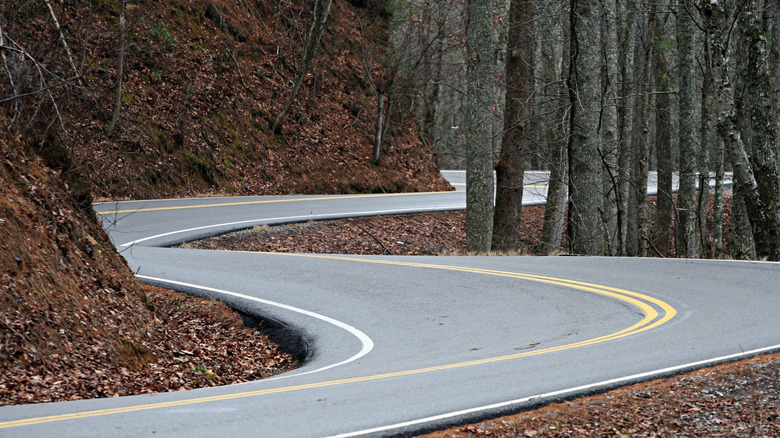
But creating the Great Smoky Mountain National Park was not easy. Unlike other popular parks in the US, like Yellowstone or Yosemite which were on Federal land, the Smokies were filled with private farms, churches and towns.
In order to turn it into a park the land had to be bought from thousands of settlers, many of whom were very proud of their life and the way they were living.
Families that have had the land for generations were forced to leave. Some sold willingly, but others were resistant. So the US government allowed them to stay under what they call a “live lease” meaning that they could live their the rest of their lives there but then they would not be able to pass the property to their children.
By 1934, the park was officially established, thanks to federal funding, donations from locals and a 5 million dollar donation from the Rockefeller family.
Today The Great Smoky Mountains National Park is not just a natural space to visit: is a place where visitors can learn about the past. There are over 90 historic buildings in the park, including churches, barns, cabins and grist meals (dishes where grains, beans, seeds, and legumes are the main components, often prepared in ways that highlight their texture and flavor) that are preserved to show what mountain life look like back then. Which is pretty cool if I have to say what I think…
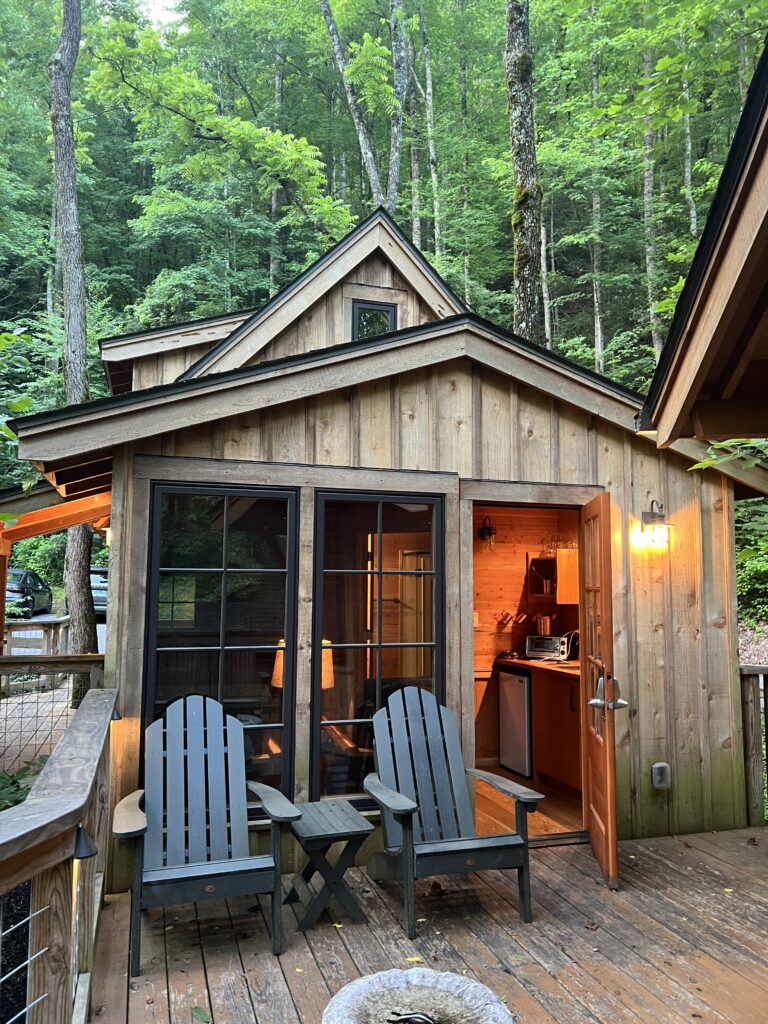
Anyway the park is a place where history, nature and culture come together which I think is a great combo.
So let’s pretend you are going to visit. Remember close to 14 million people visit annually, more than any other park in the US. It is definitely worth prepare when you go. The high season lasts from June to October, but you can also go during a shoulder season. The weather in May was nice, the flowers were blooming, everything was lush and green. It is just a matter of looking at your weather app and making sure is not going to pour rain or have a snow storm when you’re up in those mountains.
I recommend planning on visiting the park over a a two to three day period, just because there’s a lot to do. I’ll mention a few of the things that I consider a “must” and give a few specific tips afterwards.
Number one, I mentioned already Cades Cove, which is a large, beautiful and spacious meadow-like area with a lot of historical buildings. It is where you are going to see how life was like back in the 1800’. That area can be driven in a two to three hour loop. There’s usually some traffic, especially between 10am and 3 pm according to the park ranger I spoke to, but what is cool is that on Wednesdays in the summertime is car-free, so you can rent bikes and ride through all of that on your own, maybe pass some of those wild animals… According to the official webpage on NPS (National Park Service) large numbers of white tail deer are frequently seen, there are sights of black bears, coyotes, groundhogs, turkeys, raccoons, skunks and other animals.
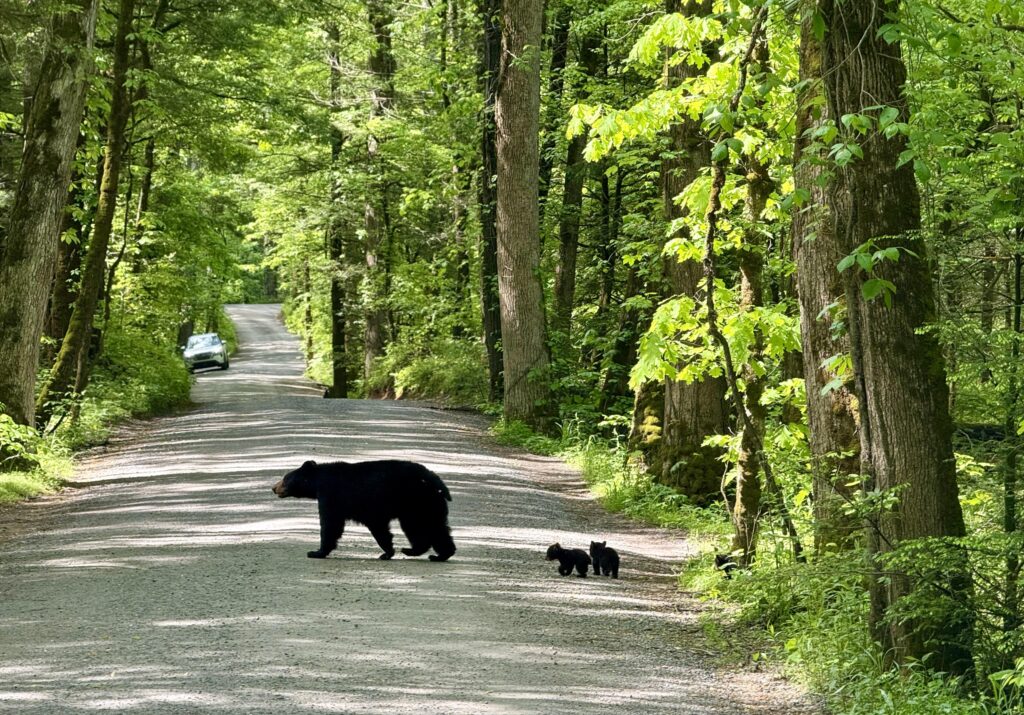
Personally I loved the idea of camping there. There’s a camp store with bathrooms, showers… There’s an amphitheater in case you’re an early wake up and be one of the first to get into the hiking trails, maybe you can get one of the parking spots which are limited… Once again Cades Cove is great and is all surrounded by the beautiful mountains.
Number two, is Kuwohi which is also known as Clingsman Dome. This is the highest point in the park. You can drive there and then walk a steep half mile trail up to a sort of futuristic looking observation tower which offers incredible panoramic views. It gets very windy and cold up there, so be sure to have some sweatshirt or a jacket with you even in the summertime.
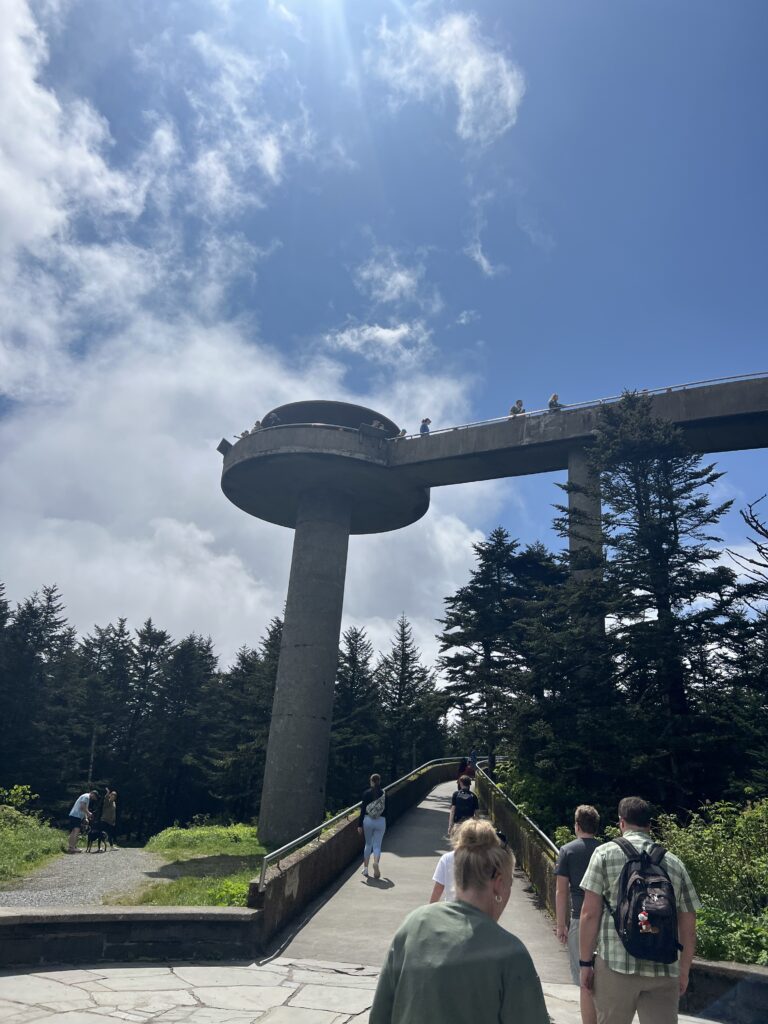
Same with Newfound Gap, that’s where Franklin Delano Roosevelt dedicated the National Park in 1940. From both Newfound Gap and Kuwogi Dome you have access to the Appalachian Trail which is worth walking a few steps on as it is a popular bucket list item in the United States, so it’s really cool to say that you have done it.. It’s really epic despite the fact that you stay on in no more than 15 minutes…
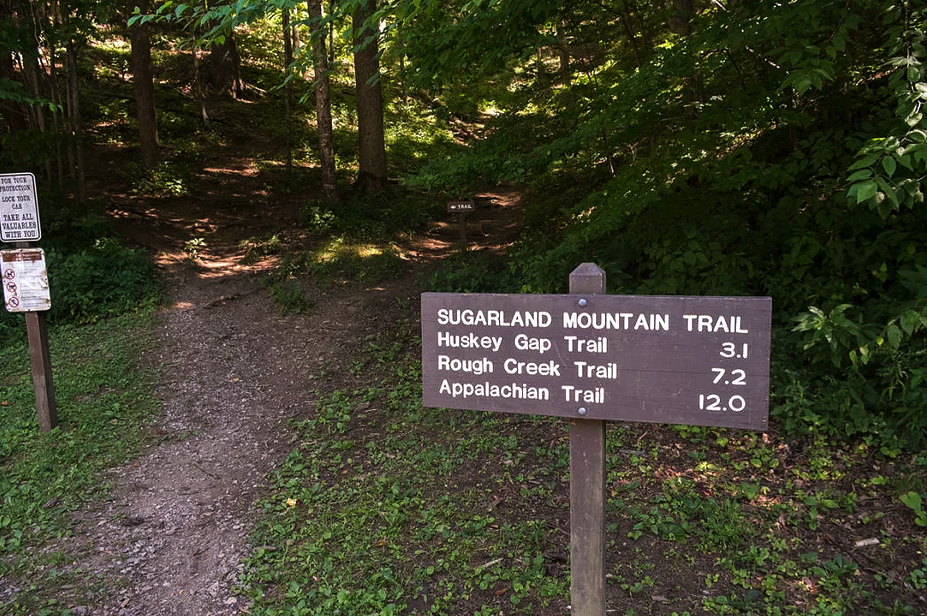
Moving on to number three. When you are there you have to choose a waterfall to see.
Laurel Falls, Rainbow falls and Grotto Falls are all very popular. Laurel Falls was closed this time but I learned that it is a very soft hike with a lot of wild flowers and a very nice view to enjoy.
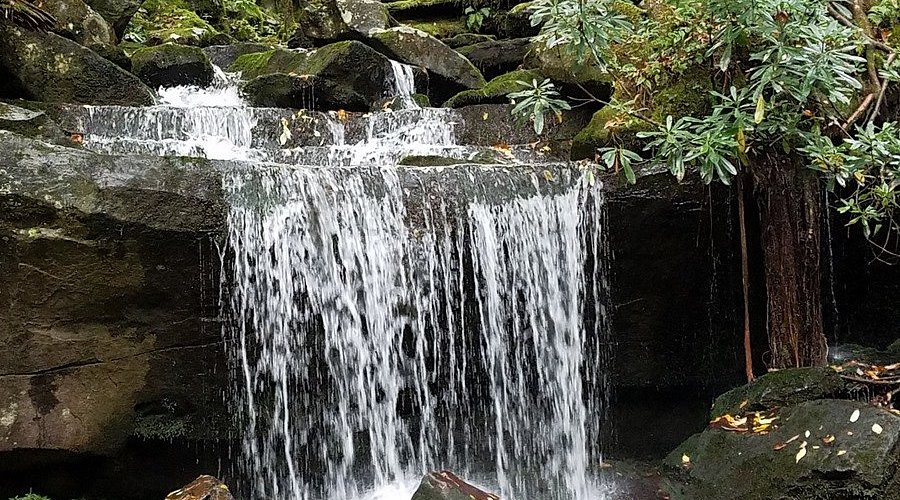
Grotto Falls is also possible is a moderate hike and I believe it’s only 2.7 miles. So I took a drive on the Roaring Fork Motor Trail and then went to Grotto Falls, Laurel Falls and of course Cades Cove and Kuwogi.
All these things are definitely possible to do with kids and, of course, if that’s the case in the future I’ll be sure to bring a lot of snacks and download offline maps because it is very common to lose service in this mountains.
If I went by myself (I mean alone) again I’d do the Alum Cave Trail which is the most popular in the park. Apparently it is just breathtaking. The only thing is (and this is for all the most popular hiking trails) there’s no enough parking spots, so you have to arrive really at the crack of dawn to get a parking space.
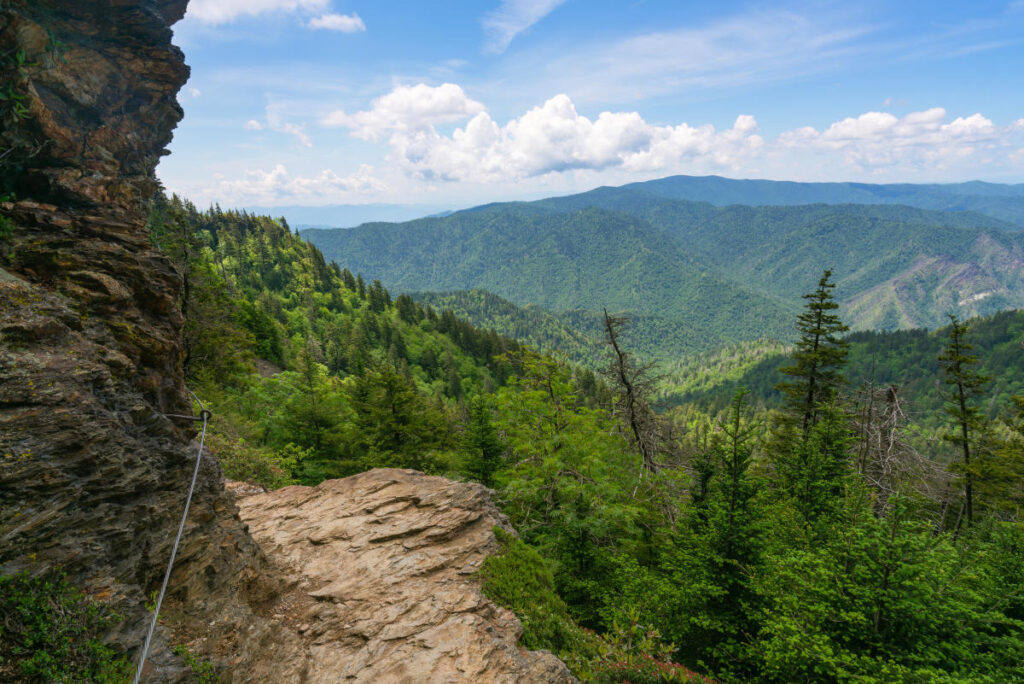
On the official website (NPS) they suggest taking shuttles rather than driving. So to avoid disappointment I’d spend the night in Gatlinburg on the Tennessee side and then take a shuttle in the morning. Shuttles from Gatlinburg and easier to schedule and cheaper than going in the entrance from North Carolina, I could confirm that from the woman at the Visitors Center and also through my research. So, yes, starting in Gatlinburg is a little bit crazy, it’s a wild little town but, yeah, it seems that it makes the most sense. It is also where you can get moonshine tasting, if that is your cup of tea.
One last thing, which is officially on my bucket list is to visit the only lodge in the park, LeConte Lodge. It is possible one of the most unique accommodations I have seen in a while. The only access to it is by hiking and the hike is between 5.5 and 8 miles, depending on the trail.
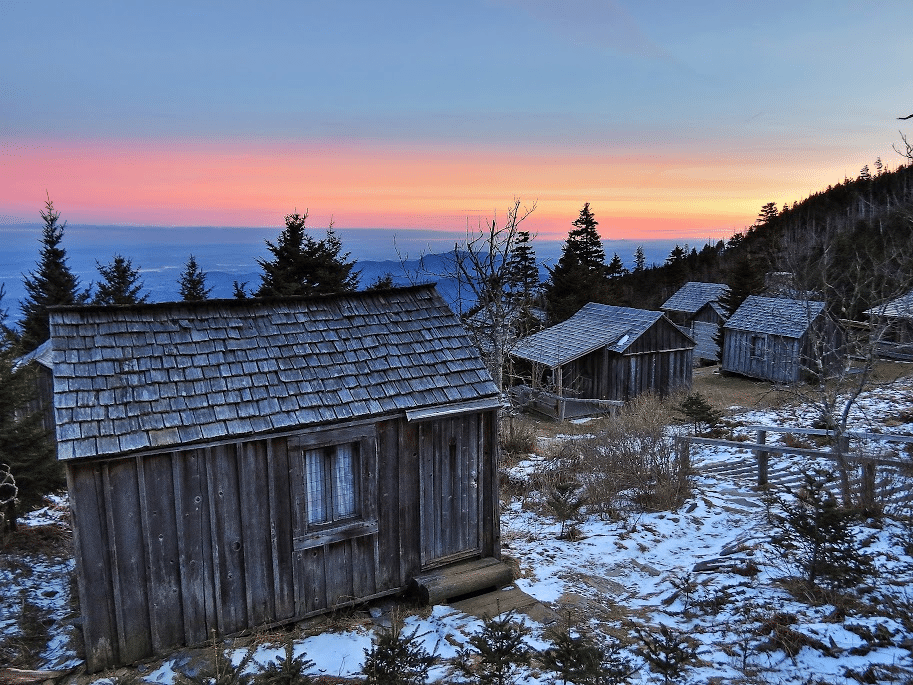
So it’s not a short hike, its a track, and once you get to the top, there’s no electricity just kerosene lights and rather than showers you’re offered a bucket to take a sponge bath.
At first I was sort of confused, thinking “huh, this is very rustic… what kind of lodge is this…?”
But it really gives you the vibe that you go back in time and the picture it makes it very cozy and there are some perks: hot cooked meals, every room has a little porch with rocking chairs and stoves. It’s not a typical stay but it’s a traditional one and I can guarantee it will be memorable.
So even though there are crowds during high season, in the Smokies you will always find a place to walk in silence, hear the voices of nature, you just might see some incredible wild life and perhaps imagining how life was in the past.

